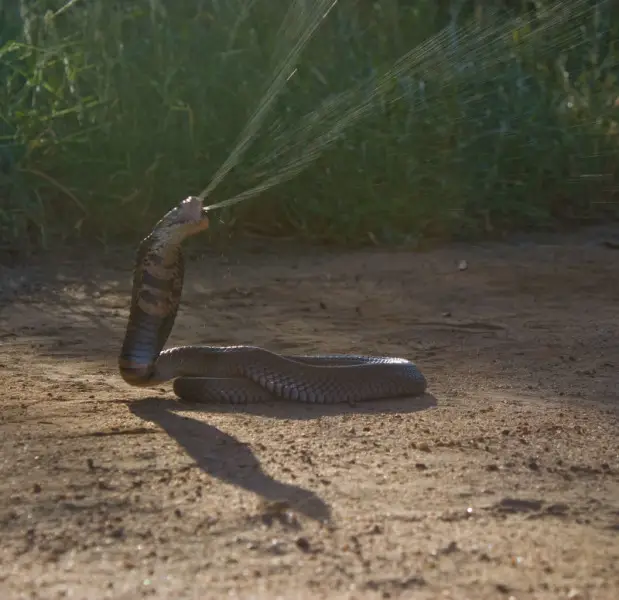The Mozambique spitting cobra is a highly venomous snake native to Africa. It is considered one of the most dangerous snakes in Africa. Its venom is about as toxic as the American Mojave rattlesnake, considered the world’s most venomous rattlesnake. The coloration of the Mozambique spitting cobra is slate to blue, olive, or tawny black above, with some or all scales black-edging. Below it is salmon pink to purple yellowish, with black bars across the neck and ventrals speckled or edged with brown or black; young specimens sometimes have pink or yellow bars on the throat.

Mozambique spitting cobras are found in Angola, Botswana, Mozambique, Namibia, South Africa, Tanzania, Zambia, and Zimbabwe. They inhabit savanna preferring localities near water, to which they will readily take when disturbed.

Mozambique spitting cobras are solitary terrestrial snakes that often shelter in crevices, holes, or in termite hills. They are mostly nocturnal but younger individuals are much more frequently encountered in the open during the daytime. Mozambique spitting cobras are nervous and temperamental snakes. When confronted at close quarters, they can rear up as much as two-thirds of their length and spread their long narrow hood, and will readily “spit” in defense, usually from a reared-up position. The venom can be propelled 2-3 meters (6.5-10 feet), with great accuracy. They may also bite instead of spitting, depending on their circumstances, and they may feign death to avoid further molestation.